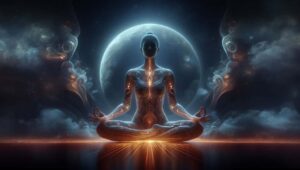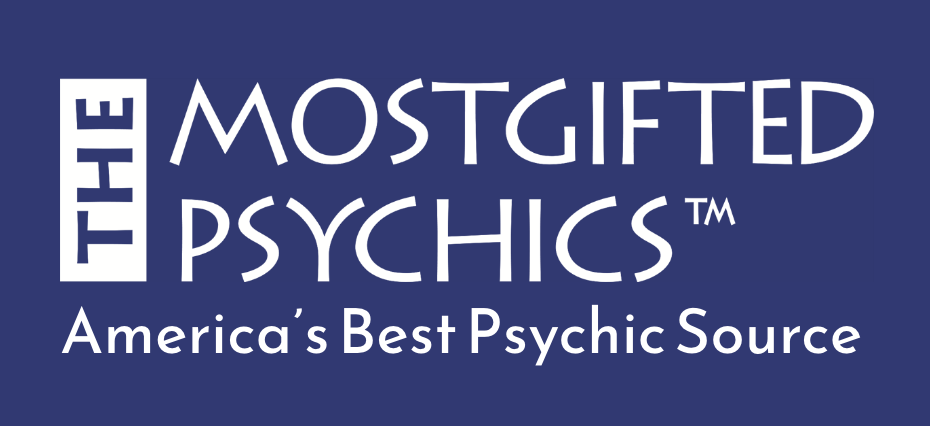 Meditation, an ancient practice that has gained substantial interest in the modern world, offers a plethora of benefits for our mental and emotional well-being. It’s a tool to develop awareness, focus, and tranquility. However, the term “meditation” is an umbrella term that encompasses a variety of techniques. Are you curious about the different types of meditation? Do you wonder how they differ in theory and practice? Or perhaps you are intrigued by the concept of 4Hz HemiSync (Hemispherical Synchronization) in meditation. This comprehensive guide will delve into these questions, providing a deeper understanding of the art and science of meditation.
Meditation, an ancient practice that has gained substantial interest in the modern world, offers a plethora of benefits for our mental and emotional well-being. It’s a tool to develop awareness, focus, and tranquility. However, the term “meditation” is an umbrella term that encompasses a variety of techniques. Are you curious about the different types of meditation? Do you wonder how they differ in theory and practice? Or perhaps you are intrigued by the concept of 4Hz HemiSync (Hemispherical Synchronization) in meditation. This comprehensive guide will delve into these questions, providing a deeper understanding of the art and science of meditation.
Meditation isn’t as simple as it may seem, many uninitiated to its ways view it merely as sitting quietly and trying to clear the mind – and, indeed, this is a form of meditation – but by far not the only form. Meditation ranges in its purpose and methodology in far reaching-profound ways.
Some enter trances when they meditate, others focus with the intensity of their entire mind, still others try with all their will to conjure thoughts or scry into the past – future, or even other dimensions. Ultimately, there is no limit to the methods that can be employed to meditate except for the human imagination itself – a seemingly limitless thing.
A Glimpse into the Multitude of Meditation Techniques
Meditation techniques are as diverse as the cultures they originate from. Each method has its distinct characteristics and benefits, making them suitable for various goals and preferences. Below are some popular types of meditation techniques:
Mindfulness Meditation
Originating from Buddhist teachings, mindfulness meditation is about being fully present in the moment. It involves observing your thoughts and emotions without judgment. Rather than getting entangled with passing thoughts, you simply observe them as a detached spectator, noticing any patterns that may emerge.
Transcendental Meditation
Transcendental Meditation is a specific technique that promotes deep relaxation through the use of a mantra. This method, developed by Maharishi Mahesh Yogi, involves repeating a word, phrase, or sound, allowing the mind to settle into a state of profound tranquility and heightened alertness.
Guided Meditation
In guided meditation, a teacher or guide leads you through the process. This method is particularly beneficial for beginners as it provides step-by-step instructions on how to meditate, creating a roadmap to inner peace and clarity.
Vipassana Meditation
Vipassana, an ancient Indian form of meditation, is all about seeing things as they are. It involves intense self-observation, fostering a deep connection between mind and body. This method promotes self-transformation through the exploration of our physical and mental sensations.
Loving Kindness Meditation
Also known as Metta meditation, Loving Kindness meditation is about nurturing an attitude of love and kindness towards oneself and others. It involves focusing on affirmations to cultivate positive feelings and goodwill.
Chakra Meditation
Chakra meditation focuses on the seven energy centers of the body, known as chakras. Each chakra corresponds to a particular color and represents different aspects of our physical and emotional well-being. This method aims to ensure that these energy centers are open, aligned, and fluid.
This is a good time to talk about another – closely associated – type of meditation – Yoga.
Yoga Meditation
Yoga meditation combines physical postures, controlled breathing exercises, and meditation. It not only promotes physical flexibility but also fosters mental tranquility by helping practitioners stay in the present moment.
Yogic meditation is perhaps one of the most fundamentally misunderstood of all meditative techniques. Most consider it to be a method deeply rooted in a belief in pantheism and the spiritual belief systems of the east of the world – this is not so. There are as many types of Yogic meditation as there are Yoga methods themselves. One of the most powerful is Kundalini Yoga, which is a very powerful type of Yoga closely associated with the Chakra system. This type of meditation may be used by itself to lens strength to numerous belief systems and is not associated in particular with any one single type of religion or cosmology, beyond that of the Chakra system – which is, itself, differently interpreted by numerous faiths and spiritualists including Gnostics, Kabbalists, Hermeticism and a variety of others.
The Fundamental Differences Between These Meditation Techniques
The fundamental differences among these meditation techniques lie in their focus, method, and purpose. For instance, mindfulness meditation emphasizes being present and observing one’s thoughts without judgment. On the other hand, transcendental meditation uses a mantra to achieve a relaxed and alert state of mind.
Guided meditation relies on an external guide to lead the practice, which can be particularly helpful for beginners. Vipassana meditation is a more intensive practice that requires self-observation and introspection. Loving-kindness meditation focuses on cultivating positive emotions towards oneself and others.
In chakra meditation, the focus is on the body’s energy centers, aiming to balance and align them. Meanwhile, yoga meditation combines physical postures and meditation, promoting both physical flexibility and mental tranquility.
 The Role of 4Hz HemiSync in Meditation
The Role of 4Hz HemiSync in Meditation
The concept of HemiSync is closely related to a phenomenon known as ‘binaural beats.’ When each ear is presented with two different pure-tone signals, with a minimal difference in their frequencies, a rhythmic beat, known as a binaural beat, is perceived.
What’s important here really isn’t the technique – but the goal of HemiSync, and it’s similarity and impact upon meditation. Testing performed by many different organizations and independent researchers has conclusively proven that those who are able to be induced to true hemisync of their mind enter a state similar to a Yogi of 7 or more years of careful study. In sum, HemisSync offers a way to harmlessly skip years of very hard work by using technology where mental discipline is required naturally – much the same way psychedelic substances induce visions to the minds eye, HemiSync does so with the mind directly.
How It Works?
The key to HemiSync is the beat. This beat is generated within the brain stem and is associated with the frequency following response, a pattern of electrical activity over the cortex.
A 4Hz binaural beat, for instance, is associated with the theta brainwave state, often linked with deep states of meditation, creativity, and REM sleep. Such a beat can potentially guide the brain into a desired state, helping the practitioner achieve a deeper level of meditation.
This is not to say it is without its failures. Some people, try as they might, may never induce HemiSync. It’s also important to consider a relaxed mental posture, physical posture and calm serene surroundings play a key role – it’s hard to induce meditation while riding on an 8AM train, standing up, at rush hour. Good headphones are also important, preferably ear covering ones which are better suited to deliver a good experience.
The writer of this guide uses a pair of apple-style earbuds of high-quality while laying in a hammock outdoors in a calm, garden setting, devoid of extraneous noise and competition for his attention. His experience has been (at times) quite profound, inducing lucid dreams and quasi-waking states of deep mental clarity and creativity.
Recognizing the Meditative State
Recognizing the meditative state can be subjective as it can vary from person to person. However, common signs may include a sense of calm and relaxation, increased awareness and focus, a feeling of detachment from one’s thoughts, and a heightened sense of connection with one’s body and the surrounding environment.
The Power of Choice and Personal Preference
The choice of meditation technique often depends on personal preference, comfort, and the specific goals one aims to achieve through the practice. It’s essential to remember that there’s no ‘one size fits all’ approach in meditation. What works for one person might not work for another. Therefore, it’s beneficial to explore different techniques, understand their unique elements and effects, and discover the method that resonates best with you.
Conclusion
Meditation serves as a powerful tool for enhancing our mental and emotional well-being. With a myriad of techniques available, each with its unique approach and benefits, there’s a method to suit everyone. Whether you prefer focusing on your breath, chanting a mantra, or visualizing a peaceful scene, the right meditation technique can be a gateway to a calmer, more focused, and more fulfilling life. The journey to mastering the art and science of meditation begins with understanding these techniques, their effects, and how they resonate with your personal goals and preferences.
Meditation and its various techniques and methods are something perhaps thought of as being highly personal – and apolitical or agnostic in basic nature. There is nothing wrong with mixing one type of meditation with another type of belief system – though some may, perfectly rightly – disagree, this is the feeling of this author. Ultimately, meditation is a tool, how it is used is up to the practitioner. A Christian can meditate upon Christ, a Muslim on Allah and others upon their own deities or subjects.
What matters about meditation should be whether it is effective or not. Though there is room for much speculative subjectivity in this arena, it’s unwise to leave the entirety of meditation to individual speculative thought – only the individual can answer to themselves, for themselves. If a system of meditation works for the individual to obtain the goals they seek – then it works. This all important question must be posed by all of those who seek the purification, mindfulness, clarity and peace meditation can provide.
It’s also important to note that meditation is one of an entire set of practices known collectively as theurgy – a set of practices designed to induce or grow the supernatural or divine agency of the individual self. This writer in particular takes the holistic view that to improve oneself, one must follow not one, but several simultaneous practices – in order to maximize the results of all of them. Practices such as fasting, burning incense, self-reflection, introspection and even divination are all collectively tied together by our minds eye.
In your quest for self-fulfillment, take care to walk carefully and to pay close attention to balance your approach, assessing each effort on its own merits and deciding whether or not to pursue each in turn.
Be sure to subscribe to our blog for weekly updates and give us your thoughts and commentary on these topics, where you can interact directly with the author and share your own ideas on these and other topics.





1 Comment
خرید بک لینک
Hey there! I just would like to give you a huge thumbs up for the great
information you have got right here on this post. I will be returning to your blog for more soon.